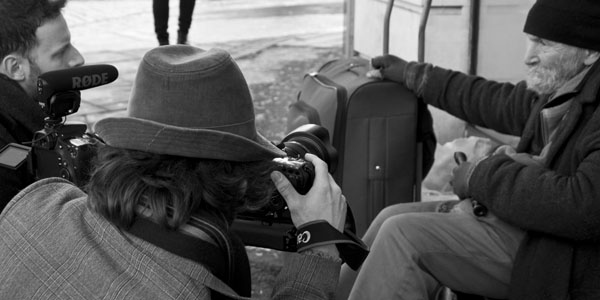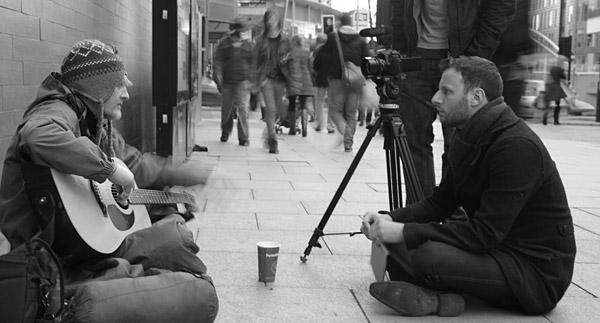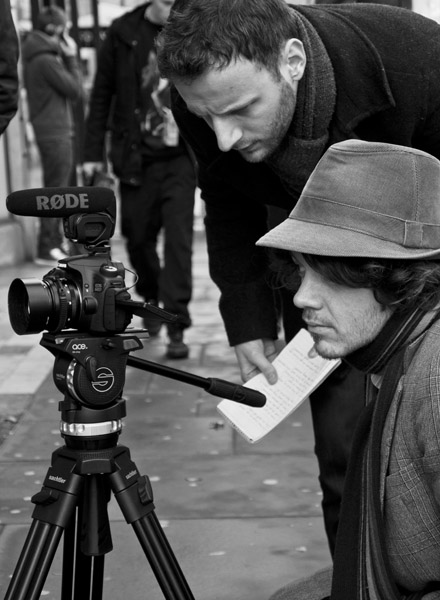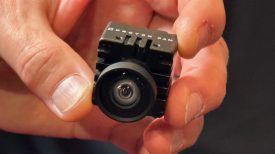By Mike Staniforth
I’ve been wanting to do some kind of short film featuring the homeless in Manchester (UK) for a while now. I’ve noticed that the number of people ‘begging’ or busking has been gradually increasing in the city centre and that told me that the problem is only getting worse. Council statistics gathered in November 2010 found only seven people sleeping rough – but then, if you were in a bus shelter, you would not count: you would have a roof over your head. I wanted to get the point of view of the people actually living on the streets.
Now, this project is off my own back. I have not been commissioned to do this and have no budget so I’ll only be using the gear I have immediate access to. So choosing my own DSLR was a no-brainer, specifically the Canon 60D. I do have access to some more spectacular cameras, but my DSLR ticked all the boxes. Small, light and inconspicuous, it’s perfect for this kind of shoot and the way I wanted to film.

On the first day of filming I used only two lenses, the Carl Zeiss 50mm f1.4 and the Tokina 11-16mm 2.8. The audio equipment I used to capture the interviews was really basic too: the Zoom H1 coupled with an Audio Technica clip mic. I did have the Rode Videomic Pro working away as well to capture some of the ambience of the busy city centre.
I took with me a 0.5m Glidetrack slider and the new Sachtler Ace tripod for support. All in all I had a very light setup, which was ideal as we were constantly on the move searching for people to talk to.
Approaching people was never a problem; everybody was happy to talk on camera and didn’t expect anything, though I felt obliged to at least offer them a hot cup of coffee.
A bonus of having such a small setup was that it attracted the minimum amount of attention. That’s not to say we didn’t have our fair share of idiots. My favourite was the charming bloke who shouted out: ‘He doesn’t want filming mate, give him some f***ing money’, I respected his point until he failed to acknowledge this particular homeless person and walked on without giving any of his own loose change.

I am about halfway through shooting this documentary and it has cemented even more for me the power factual film can have on people. I have already spoken to four people who sleep rough and intend to interview more. I am targeting local homeless shelters to get their point of view on the rise of people sleeping rough and the council’s stance. Over the past twelve months Manchester and Salford councils have cut funding to homeless shelters, forcing them to ask for more charity and in some cases shut their doors for good, so speaking to council representatives is on my list too.
My hope is that this documentary can change the viewers’ perspective on homeless people, and maybe make them consider helping out a little rather than ignoring people on the street. I’m also hoping this is something that can be taken to the council, in the hope they will reconsider their recent decision on cutting funding to yet another homeless shelter. But if I can just raise awareness of the good that local shelters do, then that is better than nothing.
Some of the things I found out whilst on this project have shocked and upset me.
One guy explained how he had his fingers broken trying to save his guitar from being stolen.
“What most people don’t understand is that the homeless are the most susceptible to crime. If you cut me, I bleed red. I am just as human as the Queen,” he said. Then he looked directly into the camera and smiled. “But my sh*t doesn’t stink as bad,” he added.
You can see more of Mike’s work at http://www.indieshorts.tv or follow him on twitter @MikeStaniforth
All photos in this post are by Jim Backhouse (@beaniehatrocks) – his flickr stream is here.








